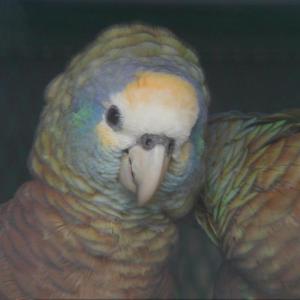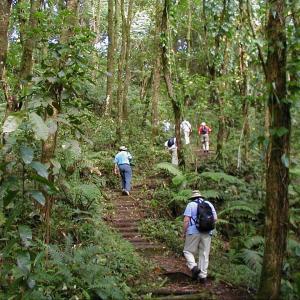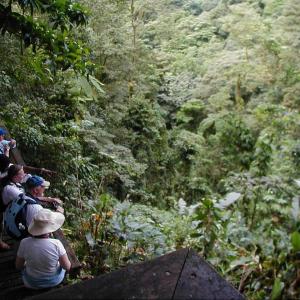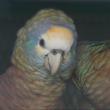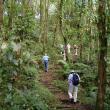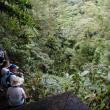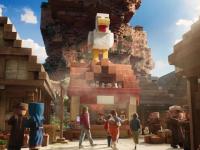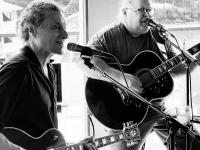Volcanic Eruption Endangers One of World’s Rarest Parrots
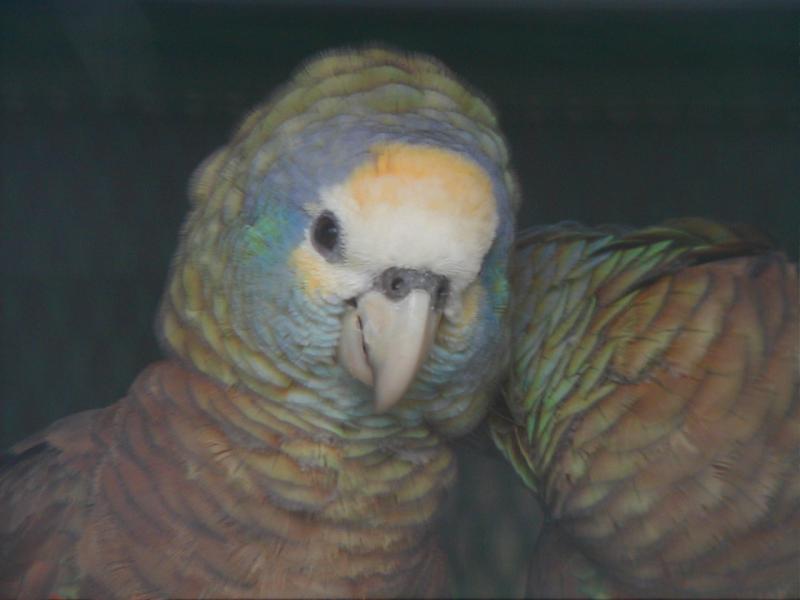 The St. Vincent parrot occurs only on the island of St. Vincent. This uniquely colorful endemic bird is currently under threat from the recent volcanic irruptions on the island. Courtesy of Jeff Wells
The St. Vincent parrot occurs only on the island of St. Vincent. This uniquely colorful endemic bird is currently under threat from the recent volcanic irruptions on the island. Courtesy of Jeff Wells
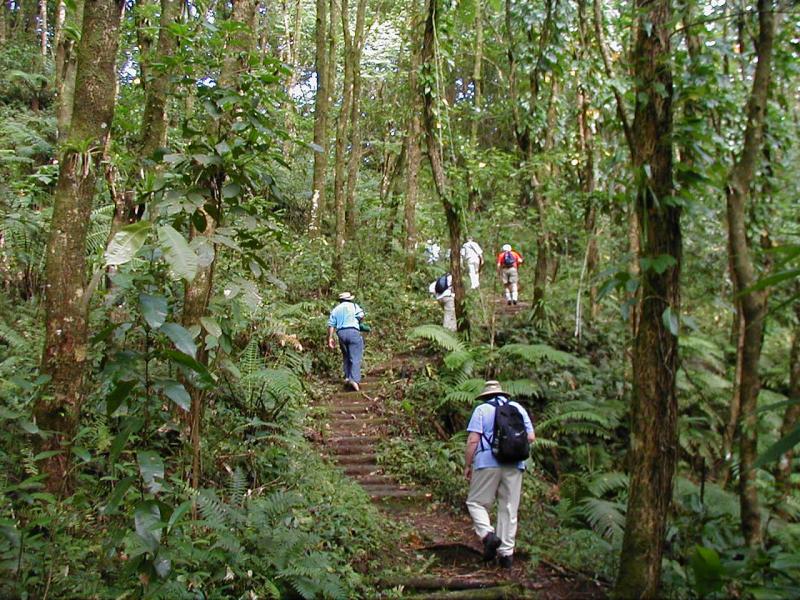 In years past, the Vermont Nature Trail on St. Vincent is one of the most popular locations to search for whistling warblers and St. Vincent parrots. Courtesy of Jeff Wells.
In years past, the Vermont Nature Trail on St. Vincent is one of the most popular locations to search for whistling warblers and St. Vincent parrots. Courtesy of Jeff Wells.
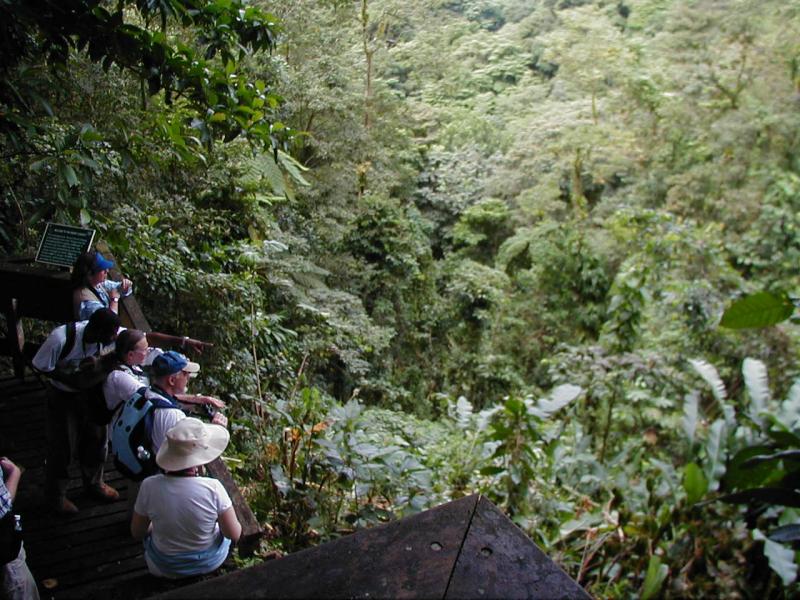 The viewing platform at the Vermont Nature Trail has traditionally offered stunning views of St. Vincent parrots. It is currently unknown what impact the recent volcanic eruptions will have on the area. Courtesy of Jeff Wells.
The viewing platform at the Vermont Nature Trail has traditionally offered stunning views of St. Vincent parrots. It is currently unknown what impact the recent volcanic eruptions will have on the area. Courtesy of Jeff Wells.
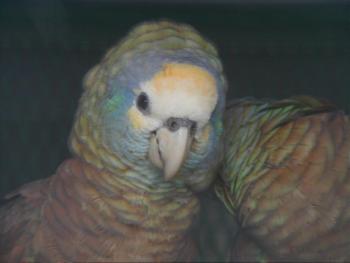 The St. Vincent parrot occurs only on the island of St. Vincent. This uniquely colorful endemic bird is currently under threat from the recent volcanic irruptions on the island. Courtesy of Jeff Wells
The St. Vincent parrot occurs only on the island of St. Vincent. This uniquely colorful endemic bird is currently under threat from the recent volcanic irruptions on the island. Courtesy of Jeff Wells
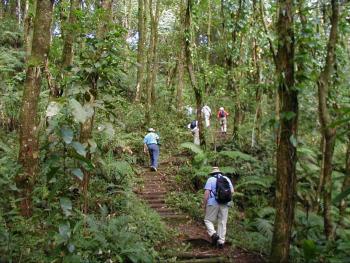 In years past, the Vermont Nature Trail on St. Vincent is one of the most popular locations to search for whistling warblers and St. Vincent parrots. Courtesy of Jeff Wells.
In years past, the Vermont Nature Trail on St. Vincent is one of the most popular locations to search for whistling warblers and St. Vincent parrots. Courtesy of Jeff Wells.
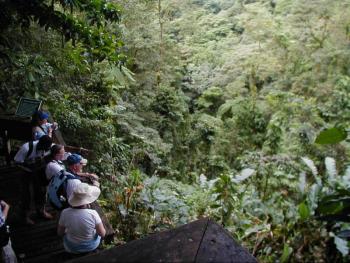 The viewing platform at the Vermont Nature Trail has traditionally offered stunning views of St. Vincent parrots. It is currently unknown what impact the recent volcanic eruptions will have on the area. Courtesy of Jeff Wells.
The viewing platform at the Vermont Nature Trail has traditionally offered stunning views of St. Vincent parrots. It is currently unknown what impact the recent volcanic eruptions will have on the area. Courtesy of Jeff Wells.
A small island only about a third larger than Maine’s own Mount Desert Island is the entire world home for one of the world’s most beautiful and uniquely colored parrots. Bright yellow on the tail tip with purple, green, blue, red, and more yellow on the wings, back, and body, and with a white crown and face and ivory-colored bill, the St. Vincent parrot is like a living rainbow.
As you can imagine from that name, its entire world is found in the humid mountain forests of the island of St. Vincent.
St. Vincent is found in the Lesser Antilles of the Caribbean, a chain of small independent island nations that rise from the sea in a curving arc that extends from east of Puerto Rico south almost to South America. Each of the larger of these island nations — from north to south Guadeloupe, Dominica, Martinique, St. Lucia, St. Vincent and the Grenadines, and Grenada — have one or more species of bird that occurs there but nowhere else in the world.
St. Vincent’s forests are the sole home not only for the stunningly beautiful St. Vincent parrot, but also the evocatively named whistling warbler, a small, dark retiring warbler with a bold white ring around the eye.
We count ourselves among the very fortunate people who have ventured into the misty and mysteriously beautiful mountain forests of St. Lucia to seek out these special birds. Both of our visits were far too short, but we will never forget them. We were there to lead birding trips for National Audubon and enlisted the aid of local nature guides to help us see these rare birds. We hiked on a trail with a name that made us New Englanders feel at home — the Vermont Nature Trail. The trail took us through a forest of massive trees and other tropical plants, bringing us to a specially constructed viewing platform that looked out across a lush valley. Here we waited, speaking in the hushed tones one reserves for places that feel sacred and special. Soon we heard the raucous, unmistakable calls of parrots coming closer. A small flock winged their way across the open valley, their rapidly beating wings showing the bright yellow flash.
We all stood silent, in awe.
On the hike back down to the parking area, the repeated whistles of the aptly named whistling warbler echoed from the depths of the forest. From a thicket near the trail, one even gave us a quick glimpse of his startled-looking face.
But in recent weeks we have heard the startling and sad news that the volcano on the northern end of St. Vincent has erupted. Ash has spread over much of the island, forcing the evacuation of 20,000 residents to the southern part of the island or to other islands. A thick layer of ash has coated much of the forests.
It is virtually impossible to know what birds and other animals do under these conditions, but clearly life is precarious for many of them in the hardest hit zones. Government biologists and rangers have been out looking for starving and struggling birds and other wildlife that can be brought into rehabilitation centers to try to bring them back to health. Fruits are being placed out in various places for the parrots in the hope that they can find the feeding stations before they become too weak and sick.
Birds like the St. Vincent parrot and whistling warbler are unique to the world’s biodiversity. They have special ecological roles within the forests of St. Vincent. The island nation holds these birds in high honor, an intrinsic piece of their own identity and natural heritage. Seeing these magnificent birds with our own eyes and knowing this tiny island in the Caribbean Sea is the only place in the entire world where they are found was a life-changing reminder of how the lives of some creatures hang in the balance.
Right now, that balance has tipped against these birds. Before the eruption of La Soufrière volcano, the total population of St. Vincent parrots was thought to be less than a thousand, so losing even one is a major blow.
The U.N. and other agencies are working to provide relief and support for the people of St. Vincent. The birds are going to need our help, too.
If you would like to support the efforts to help these birds and other wildlife on St. Vincent, please visit the Birds the Caribbean website to learn about how to provide financial aid at https://www.birdscaribbean.org/2021/04/an-appeal-for-relief-and-rescue-as-the-la-soufriere-volcano-eruptions-threaten-the-st-vincent-parrot/
Jeffrey V. Wells, Ph.D., is a Fellow of the Cornell Lab of Ornithology and Vice President of Boreal Conservation for National Audubon. Dr. Wells is one of the nation's leading bird experts and conservation biologists and author of the “Birder’s Conservation Handbook.” His grandfather, the late John Chase, was a columnist for the Boothbay Register for many years. Allison Childs Wells, formerly of the Cornell Lab of Ornithology, is a senior director at the Natural Resources Council of Maine, a nonprofit membership organization working statewide to protect the nature of Maine. Both are widely published natural history writers and are the authors of the popular books, “Maine’s Favorite Birds” (Tilbury House) and “Birds of Aruba, Bonaire, and Curaçao: A Site and Field Guide,” (Cornell University Press).
Event Date
Address
United States

